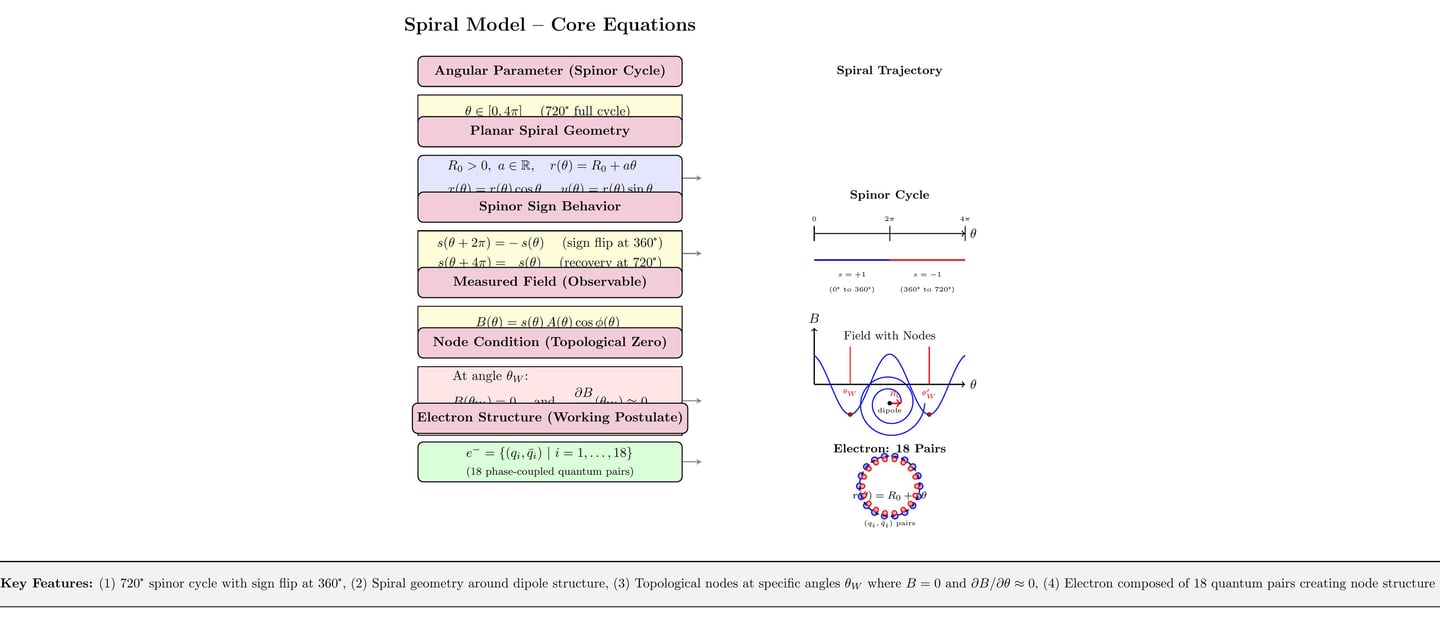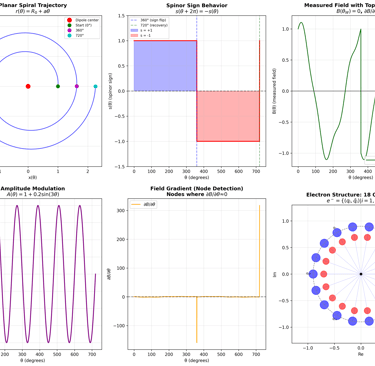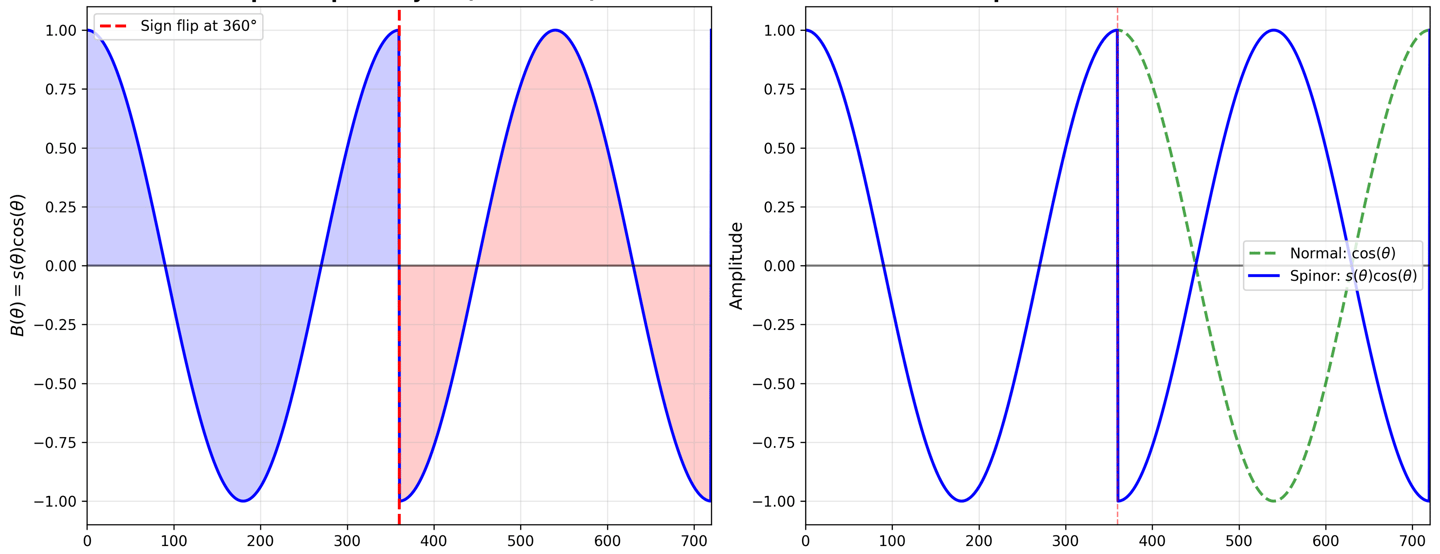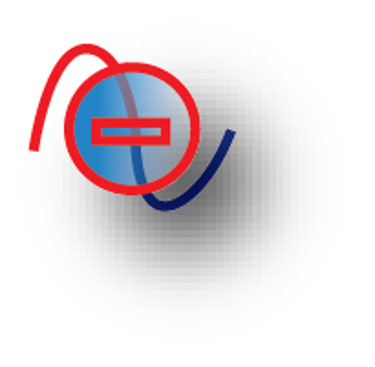Spiral Model
Motivation
Standard field theory describes particles as excitations of fields, often in an abstract, high-dimensional space. In my work I start from a more geometric and topological picture: a spiral structure built around a dipole, with a special role played by a zero point (node) where phase and direction can change.
This is not meant to replace the Standard Model. It is an attempt to provide a geometric, phase-based description of how stable matter and persistent fields could emerge from repeated, structured cycles.
Core Picture
The basic ingredients of the spiral model are:
– a dipole: two opposing “monopole” channels, conventionally labelled N and S,
– a spiral trajectory: not just a circle, but a helical / spiral path that needs a 720° cycle to return to its original state (spinor-like behaviour),
– a zero point (node): a narrow region where the field effectively passes through zero and where the phase can flip or re-route between channels.
Experimentally, I probe this using a magnetometer and a rotating setup. When I rotate a magnet through full cycles and record the field every 10 degrees, I consistently see:
– smooth “pulling” of the field within 10° sectors,
– sharp changes near certain angles,
– and two stable angular regions where the field crosses zero and the effective energy in that sector drops to a minimum.
These regions I interpret as manifestations of the node – the zero point in the spiral trajectory of the field.
Spinor-like 720° Behaviour
In the model, a full informational cycle requires 720°, not 360°. After 360° the state returns geometrically but with a flipped sign (similar to a spin-½ spinor). Only after 720° does it return to the original state.
Formally I encode this as a function s(θ) with:
s(θ + 360°) = −s(θ)
s(θ + 720°) = s(θ)
This double-cycle structure is at the heart of the spiral model and later becomes important when I talk about electrons and discrete pairs.
Electron as a Finite Spiral Structure
In this framework, I model the electron not as a point, but as a finite spiral structure composed of a fixed number of phase–coupled pairs (for now: 18 pairs in 36 domains). Each pair corresponds to a segment of the spiral that passes through the node and returns in the opposite channel.
The exact number is a working postulate, not yet a theorem. What matters at this stage is the idea:
– the electron has an internal phase structure,
– this structure is tied to a dipole and a node,
– and its stability comes from completing closed 720° cycles in a finite, repeatable pattern.
Relation to Measurements
The spiral model is constrained by real data:
– repeated magnetometer measurements as a function of angle,
– stable positions of nodes (angles where the field consistently crosses zero),
– asymmetry between “N” and “S” halves of the cycle.
The model must reproduce these features. Wherever it does not, it must be revised. This is a work in progress, not a finished doctrine.






It may turn out that a different count (or a whole family of counts) fits the data better. At this stage 18 is a concrete, testable hypothesis, not a dogma.
Contact
Phone
jan@proforpic.com
+44 07400512202
© 2025. All rights reserved.
